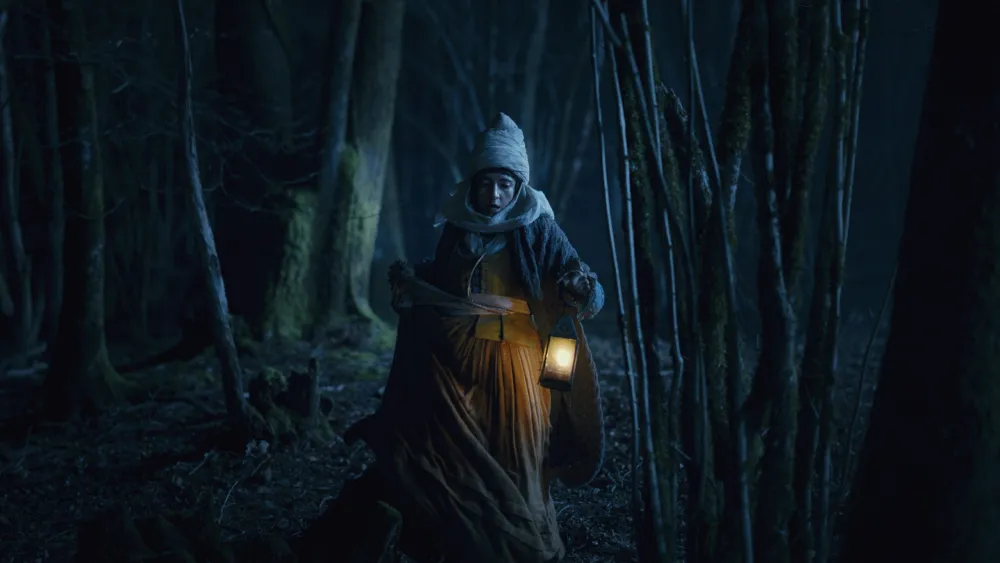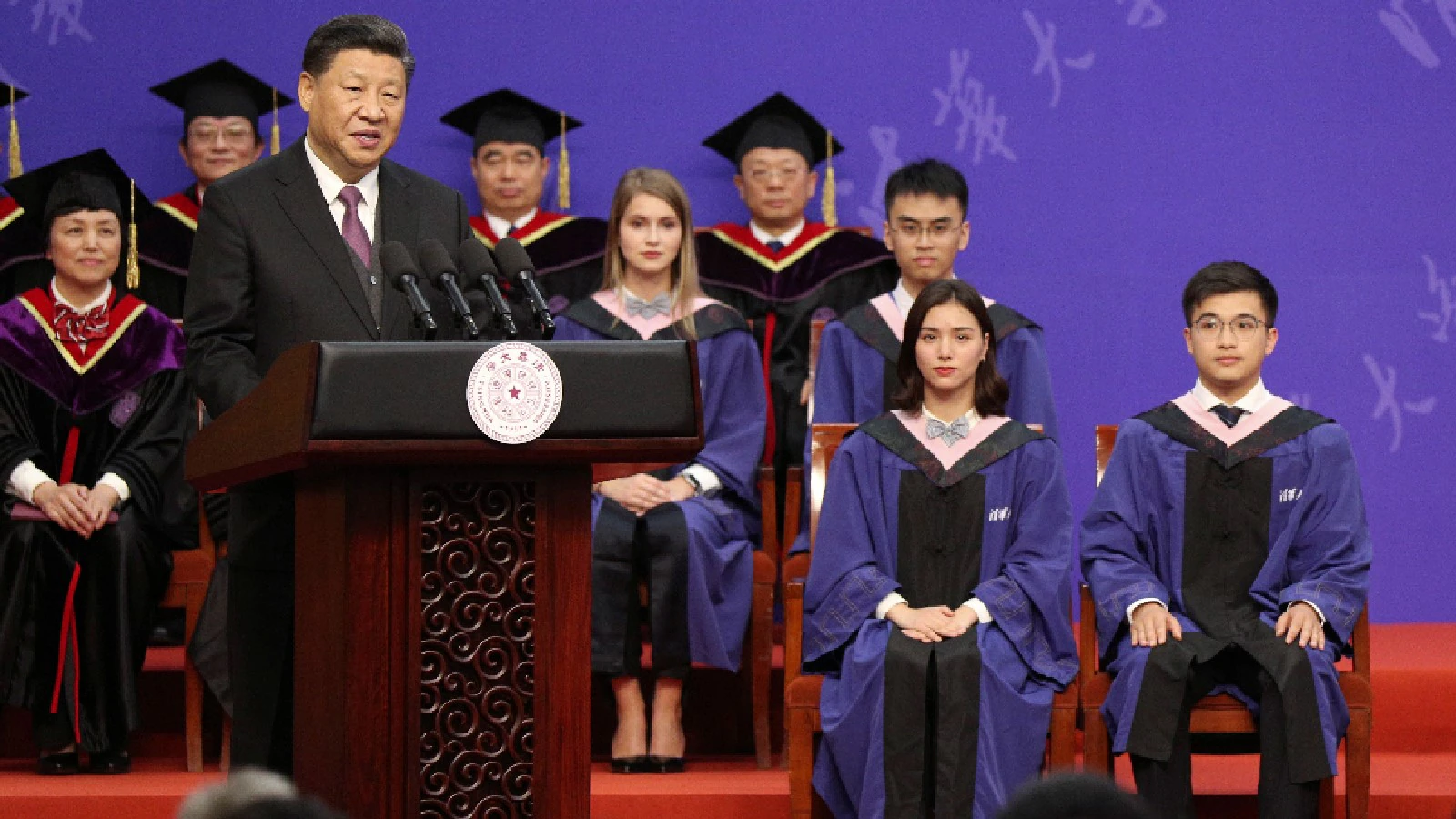
For more than a decade, Basque cinema has increased reach at San Sebastián and beyond, largely on the back of auteur dramas and robust regional support. This year, at Sitges four Basque films are unspooling, and all of them, from animation to folk horror to high-concept sci-fi, are rooted in genre.
Four Films, Four Directions
Sitges audiences will get a first taste of Paul Urkijo’s “Gaua”, his third Basque-language feature after the breakout success of “Errementari” and hit “Irati.” Produced by Irusoin, Ikusgarri Films and Vilaüt Films, the film plunges into nocturnal folklore and 17th-century superstition as Kattalin, played by Yune Nogueiras, ventures into a forest bristling with mythical beings. “With ‘Gaua’ we continue a line of work we started years ago: producing in Basque, with strong genre elements, but thinking from the very beginning that the film has to cross borders,” Xabi Berzosa of Irusoin told Variety.
Alberto Vázquez returns with “Decorado,” following Goya-winning “Unicorn Wars.” Produced by Abano Producións along with Uniko Estudio Creativo, Glow Animation, Sardinha Em Lata, and María y Arnold AIE.in a Spanish-Portuguese partnership. This adult animation zigs toward existential satire: Arnold, a middle-aged mouse, wanders a world that feels staged, every backdrop like cardboard scenery. As his crises accumulate, emotional, professional, even romantic he suspects that his reality is artificial. What begins as paranoia becomes a symbolic journey to loosen the scaffolding of illusion and to find the genuine.
Ion de Sosa delivers the Spanish premiere of “Balearic” in Sitges’ Oficial Fantàstic competition having World Premiered at Locarno. The film is produced by Umbracle Cine, Apellaniz y de Sosa and Jaibo Films in co-production with La Fabrica Nocturna Cinéma. A poolside party descends into menace as a group of young people are trapped in a villa’s swimming pool, black dogs circling outside while a St. John’s Eve party rages next door. Part survival thriller, part social allegory, the director told Variety earlier this year that its seed “stemmed from “looking at how young and older people communicate and also at myself critically and wondering what I was doing, if any, to make the world a better place.”
Finally, “Singular,” from Alberto Gastesi and produced by White Leaf Producciones and Vidania Films , brings Patricia López Arnaiz and Javier Rey into a lakeside house where an AI specialist encounters a figure uncannily resembling her dead son. Blending grief drama with speculative science fiction, it taps into the open and zeitgeist question of just where technology is taking us.
Why Basque Filmmakers Are Turning to Genre
Berzosa places the trend squarely with directors. “I don’t think that producers have been so important in green-lighting those projects. It’s more the directors and the creators’ appeal to the genre. Luckily, it’s also a very demanded genre nowadays. So it’s great as a producer to see and take part in it.”
One of Spain’s most exciting younger genre auteurs Paul Urkijo embodies that shift. “Paul is a very special case. He is an absolute genre lover, but at the same time his imagination is rooted in Basque culture. That combination is rare, and that’s why his films are so different,” Berzosa observed.
Financing for “Gaua” reflects the new internationalism of Basque production. “We were lucky to put together Irusoin, Ikusgarri and Vilaüt, and to have Filmax involved from the start. It gave the film an international frame even before the shoot.”
Iván Miñambres, executive producer at UniKo, sees both tradition and market opportunity driving the surge. “In the Basque Country there is a strong storytelling tradition rooted in mythology, and in the duality between the everyday and the extraordinary. That background naturally lends itself to genre cinema.” he told Variety. “At the same time, in recent years we have seen a new generation of producers and filmmakers willing to take risks, to experiment visually and thematically, and to connect with international audiences through universal themes wrapped in genre or surreal narratives. Strong institutional support and co-production networks have also given these projects the resources to compete internationally.,”
For Miñambres, the trend is just beginning. “The international market has become increasingly receptive to original and daring voices in cinema, and as producers we must take advantage of this moment. ” he said, adding “I believe we will see even more productions coming from our region, not only because of this global openness, but also because local talent is now more ambitious and connected than ever. Genre is proving to be a powerful tool to talk about contemporary fears, contradictions, and identities from a unique and distinctive perspective.”
Compared to Basque festival breakouts of the past decade such as Estibaliz Urresola Solaguren debut “20000 species of Bees” or David Pérez Sañudo’s “Ane Is Missing,” dramas shot through with regional specificity, these films look louder, darker, perhaps weirder. Yet they carry forward the same DNA of bold aesthetics and cultural awareness.
“We are talking about very local, very Basque mythology, but it connects with how every country approaches storytelling. Each country has its own, but we can understand one another through story. It always comes down to drama and character,” Berzosa stressed.
Sitges has long functioned as Europe’s premier launchpad for fantastic cinema. Alongside exposure it gives entry into a network of buyers and fans who treat genre as serious cinema. The four films make clear Basque productions constant diversification, and genre as a strong calling card.



